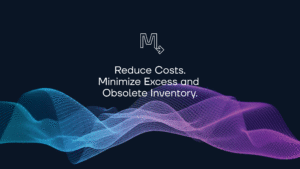A Canadian friend taught me an important principle. His favorite t-shirt pictured a simple cartographic border outline of his home province Saskatchewan (which is almost perfect rectangle).
It read “Saskatchewan: easy to draw, hard to spell.”
You may or may not have to be from the great white north to appreciate the humor, but the principle remains. Let me explain…
Like most forward-thinking leaders, every medical device company wants the same thing, right?
An all-in-one, unified surgery scheduling, usage, inventory management, and billing platform.
Whether creating it in-house or partnering with a ready-to-go vendor, the focus on building a 100% seamless and smooth process for everyone – sales, operations admins, and corporate leaders means making sure everything works so that each member of the organization can efficiently and effectively perform their role. If they can do all their tasks in a single platform, then everything works better.
The secret is not so secret, the execution is pretty close to impossible for most, though.
The concept may sound obvious, but with so many major medical device companies standing to gain so much from attaining this holy grail of medical device logistics software tools, why haven’t they achieved it yet? Can it be that hard?
Yes.
Truth: Easy to draw, hard to spell.
If you are like most people the solution is simple to identify, but difficult to implement.
When the functionality is in place, everything needs to connect in real-time.
An important key piece of a fully unified platform is true, real-time integration.
Of course, you must have all the functionality for all users, in one comprehensive system. Once you do, the only thing left is to make sure the entire system is integrated properly.
It is not just about having one feature, or one aspect of working properly. You need to be sure everything works well. For everything to seamlessly work together requires FULL ERP system integration.
So why isn’t everyone doing it?
It appears that implementing a real-time, fully functioning integration–and actually making it all work properly–is difficult. Very difficult. In fact, there is only 1 medical device field operation solution that has ever been able to pull it off. And the team at Movemedical has done it over 20 times.
Your team is the most important factor that determines the success of your project.
So finding talent–whether among your own in-house resources or with a provider partner–that has experience actually designing and implementing a true integration (especially with your specific system) that’s invaluable. Infinitely more valuable would be if they’ve achieved it multiple times, or integrated with a variety of ERP systems. All that experience with ERP integration and process automation is critical to connecting your data in a way that is effective, stable, and maintainable.
It may go without saying, but it would be wise to avoid trusting this critical of a project to resources or vendors that claim to be able to integrate but have no experience doing it (proof?). Often all that is being offered is a system that you will still need to connect to your ERP into some through cumbersome middleware (e.g. mulesoft, boomi), and then hope your IT guys can figure it all out on the other end! In addition to their job, everyone need not also be experts in ERP language. That’s not a solution. Simply transmitting the data is not enough; it needs to be translated. That way, you can focus on strategy and innovation while trusting the system to do the heavy operational lifting.
Details matter. More now than ever before.
Nuance at scale is vital to a true integration. The ability to translate all order types (direct, bill-only, consignment, waste, construct, etc.) with multiple products and order reasons across different business units, in different locations with different business rules, around the world relies on a true and complete integration.
It is vital to sync the data, ALL DATA. This ensures everything in both systems stays current. Your solution should offer externally-facing APIs for as many integration points as possible. Where it is logical, integration points should be combined to reduce development and maintenance. And the more integrations that use web services rather than files, the better.
The more you can share in real-time, the easier it is to run your business.
Sharing is caring.
There are multiple ways to share data, and the most value is derived from flexibility with ways to create and maintain integrations (e.g. SOAP, REST, FILES, WEB SERVERS, XML, HTTP, JSON). There are a variety of possible integration configurations, including real-time services and file pushes. Most commonly, SOAP or REST services send data to JDE and build customer-specific connectors based on the WSDL (web service schema). This works best for real-time transaction data such as sales orders or restocks. For master data going out to the provider, a file-upload type interface process might work best, as this data typically does not need to be updated in real-time (i.e. customer master, item master, etc.).
Flexibility and versatility are qualities which require experience, and which enable maximum customization.
You want the software tool to play nicely with your ERP.
A seamless, detailed, custom API integration provides Sales and Operations teams visibility, accessibility, and functionality into item-level stock searches, kitting, consignment, loaners, audits, shipments, sales orders, and inventory management. An integration suite should be flexible and can be customized to your needs, so there’s no need to force its standards on your processes.
Keeping your data clean requires the ability for users or admins to configure how the scheduling and inventory tool validates the information it sends and receives from your ERP. Users should be able to define which data the provider should check prior to sending to ERP (Pre-ERP Validation), and if it’s invalid, the user should be prompted to resolve. The provider should also display error messages returned from your ERP system, and translate them into friendly messages for the user (ERP Validation). Once data is sent to your ERP, your workflows and processing rules should take over.
It takes a team of experts who have done it before.
True integration is a very involved process.
Solution teams should consist of ERP/Integration developers, PM, BA (SME) and Testing, Training, and Validation support. They may also include a Solutions Architect and a Product Owner for the implementation. The Solutions Architect works with your ERP architects/developers to establish the technical design of your integration. The Product Owner guides the solutioning of your processes and any new requirements.
In-house solutions obviously will require significant development resources which would not be required if using a ready-to-go provider solution, as they will leverage their experience. But with either solution, some internal IT resources and developers might still be needed. A homogenous development experience will help bring your resources up to speed quickly, ideally including standardized tooling, traceability, encryption, logging, and metrics. All integration communication, including errors, should be logged in the system and be accessible to administrative users within the app. This is critical to monitoring and maintaining the lines of communication between the systems as they are adapted incrementally to your evolving business.
During integration, additional resources may be required, such as analysts. Analysts or SMEs can understand the needs of the business and understand how those needs are represented in your master data. They may also be needed to assist your integration developers with documenting integrations that are created by your ERP / Integration developers. The need for developers will depend on the scope of your integration. A typical enterprise implementation involves the development of some integration points. If your organization already has integrations developed for other systems, they may potentially be leveraged for your provider’s implementation.
When the data is clean, everything looks (and works) better.
Master-data can make or break a go-live. Regardless of how robust or high-performance the software features are, that won’t matter if the key data that drives all of the features is malformed, unexpected, or inconsistent. For this reason, planning, designing, and thoroughly testing master data is more important than testing features. Testing should focus on your integration points to ensure data integrity.
When your partner knows what they are doing, you always have more fun.
A test plan should be developed to include Data and Business Scenarios. Test master data as integrations are built. This will be performed by your internal resources–an analyst or SME that understands the structure of your data. Your Customer Service / Sales Ops team will need to gather and document all the common scenarios that should be tested in order to ensure the team is ready for go-live.
A thorough process to Identify Business Scenario Data and Expectations can help to make sure all the features are handled by the application.
Enterprise projects invariably require plans and documentation. The burden on your organization is reduced when it comes to validating Software-as-a-Service (SaaS) applications because infrastructure management and some application management is shifted to the vendor.
You may be able to capitalize on your solutions provider’s experience, and look to them to leverage pre-written partner/vendor documentation regarding:
- Requirements, Risk Assessments
- Functional / Design Specifications
- Installation, Operational and Performance Qualifications
This way the responsibility is shared. Also, you may be able to leverage your vendor’s Integration Guide which details:
- Approach to system setup and master data maintenance
- Interfaces with your organization’s systems, including:
- Purpose (Project Objective)
- File format, file delimiters, delivery schedule, processing schedule
- Interface fields, their mapping to Move fields, and processing logic
- Error handling / Testing / Validation / Fixes
- Dependencies (on other interfaces)
To ensure a seamless experience from the front end (Reps) to the back-end (Ops) integration points should include, at a minimum:
- Customer / Account, Rep, Rep to Territory Alignment (Org Unit mapping)
- Facility to Territory Alignment (Org Unit mapping)
- Item Definitions, and Transfer (creation).
Next, orders or transfers will continue to be created:
- Advanced Shipping Notice (ASN)
- Inventory Sync
- Adjustments
- Stock Order Feed
Additionally, these data integration points are important and add to the seamless experience:
- Physician
- Physician to Facility Alignment
- Kit / Component
- Stock
- Stock Order (creation)
- Contract Pricing
- List Pricing
- Backorder Status (if not in ASN)
- Invoice Confirmation
- Sales Orders
Knowing what to do is one thing. Actually doing it is another story.
It takes experience, a trusted partner, and attention to detail.
If you can create a plan and then take action to make those integrations happen, you will have a successful outcome. When you have a plan in place and are working with a trusted partner, you will accomplish your vision. You will optimize your field operations by providing a useful tool that gets the job done.
Your journey to optimization has already begun. Keep going.
Movemedical has helped many medical device manufacturers succeed whose previous “solution” failed them, whether it was built in-house or by a 3rd party. You need to partner with someone who has done it before. We are here to help. Better partners help drive better results.
We can help, we can be your partner.
Call Now: 877.469.3992
Email: mm@movemedical.com
Request Info: https://movemedical.com/request
More info: http://www.movemedical.com/product
Key benefits: consignment management at all levels, true item level kitting, case management and inventory assignment, loaners, accurate forecasting, complete visibility, par-management, RFID, tracking all items inside and outside kits, sterile, non-sterile, HIPAA compliant communication (files, messaging), and full custom ERP integrations to reduce manual effort.
Now it is time to take action.
Call Movemedical now to begin your journey.
858.956.0219 or info@movemedical.com



